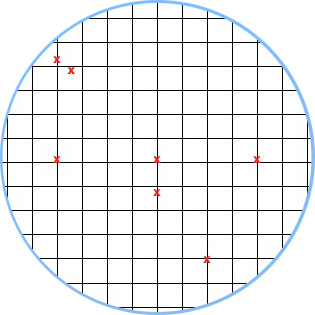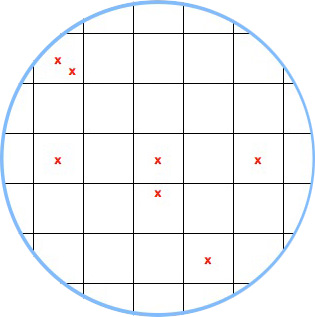The RV870 Story: AMD Showing up to the Fight
by Anand Lal Shimpi on February 14, 2010 12:00 AM EST- Posted in
- GPUs
Process vs. Architecture: The Difference Between ATI and NVIDIA
Ever since NV30 (GeForce FX), NVIDIA hasn’t been first to transition to any new manufacturing process. Instead of dedicating engineers to process technology, NVIDIA chooses to put more of its resources into architecture design. The flipside is true at ATI. ATI is much less afraid of new process nodes and thus devotes more engineering resources to manufacturing. Neither approach is the right one, they both have their tradeoffs.
NVIDIA’s approach means that on a mature process, it can execute frustratingly well. It also means that between major process boundaries (e.g. 55nm to 40nm), NVIDIA won’t be as competitive so it needs to spend more time to make its architecture more competitive. And you can do a lot with just architecture alone. Most of the effort put into RV770 was architecture and look at what it gave ATI compared to the RV670.
NVIDIA has historically believed it should let ATI take all of the risk jumping to a new process. Once the process is mature, NVIDIA would switch over. That’s great for NVIDIA, but it does mean that when it comes to jumping to a brand new process - ATI has more experience. Because ATI puts itself in this situation of having to jump to an unproven process earlier than its competitor, ATI has to dedicate more engineers to process technology in order to mitigate the risk.
In talking to me Carrell was quick to point out that moving between manufacturing processes is not a transition. A transition implies a smooth gradient from one technology to another. But moving between any major transistor nodes (e.g. 55nm to 45nm, not 90nm to 80nm) it’s less of a transition and more of a jump. You try to prepare for the jump, you try your best to land exactly where you want to, but once your feet leave the ground there’s very little to control where you end up.
Any process node jump involves a great deal of risk. The trick as a semiconductor manufacturer is how you minimize that risk.
At some point, both manufacturers have to build chips on a new process node otherwise they run the risk of becoming obsolete. If you’re more than one process generation behind, it’s game over for you. The question is, what type of chip do you build on a brand new process?
There are two schools of thought here: big jump or little jump. The size refers to the size of the chip you’re using in the jump.
Proponents of the little jump believe the following. In a new process, the defect density (number of defects per unit area on the wafer) isn’t very good. You’ll have a high number defects spread out all over the wafer. In order to minimize the impact of high defect density, you should use a little die.
If we have a wafer that has 100 defects across the surface of the wafer and can fit 1000 die on the wafer, the chance that any one die will be hit with a defect is only 10%.

A hypothetical wafer with 7 defects and a small die. Individual die are less likely to be impacted by defects.
The big jump is naturally the opposite. You use a big die on the new process. Now instead of 1000 die sharing 100 defects, you might only have 200 die sharing 100 defects. If there’s an even distribution of defects (which isn’t how it works), the chance of a die being hit with a defect is now 50%.

A hypothetical wafer with 7 defects and a large die.
Based on yields alone, there’s no reason you’d ever want to do a big jump. But there is good to be had from the big jump approach.
The obvious reason to do a big jump is if the things you’re going to be able to do by making huge chips (e.g. outperform the competition) will net you more revenue than if you had more of a smaller chip.
The not so obvious, but even more important reason to do a big jump is actually the reason most don’t like the big jump philosophy. Larger die are more likely to expose process problems because they will fail more often. With more opportunity to fail, you get more opportunity to see shortcomings in the process early on.
This is risky to your product, but it gives you a lot of learning that you can then use for future products based on the same process.










132 Comments
View All Comments
papapapapapapapababy - Sunday, February 14, 2010 - link
Ok, ok, great read, but i have to hate a bit, 1,2,3 GO! hey Carrell here is my top priority feature for your next PRS1 -Drivers that dont suck ass-
"The performance was still a problem and the RV740 was mostly lost as a product" ...
the fuk? the 4770 is the BEST card i ever had, PERIOD. cheap, fast, cool, the perfect RV770, thanks !
bla bla Carrell "He’s single handedly responsible for getting Eyefinity included in the Evergreen stack"
Meh? who gives a sht. , Carrell give me console like gpu scaling, so we can finally play crysis at 1080p, another one for that PRS
"Carrell went to David Glenn, head of software engineering at ATI and asked"
drivers that dont suck, please?
" There were also game compatibility concerns that made ATI not interested in the software approach"
Lol i wonder why? i think i know why. Hardware, hardware, what about the software,Carrell?
ok, thats it. not much to complain this time, flawless job ati guys
f0d - Sunday, February 14, 2010 - link
long time reader/first time postingive never felt the need to post anything but with this article i really wanted to say:
"thank you"
the insights we get in these articles is amazing (i also read the first when it was done)
i like the "no technical or maketing bs" writing of this story and all the little pieces of information like with the eyefinity story and sideport
please do as much of these type of stories as possible - it must be difficult to talk to the right people and get the right information out of them and also be allowed to publish it but it makes a great read
Robert Kooijman - Sunday, February 14, 2010 - link
Awesome article Anand!Also specially created an account to inform you how impressed I am with articles like these. A real treat these behind the scenes stories in non-marketing language. Keep 'm coming, compliments!
- Friday, February 19, 2010 - link
bravowhen do the (tech industry) book's come out??
Kryten - Sunday, February 14, 2010 - link
Informative, interesting, inspirational, edifying and very well written. Here's hoping for more research and articles like this.greenguy - Sunday, February 14, 2010 - link
Hi Anand, I've been reading your stuff for 3 years or so, I just created an account to tell you how awesome that article was. Very nice work. This sort of content is why I read Anandtech. (My other favorite articles have been the SSD articles and the i5-750 article.)I especially like to hear about AMD/ATI - I like having a serious competitor to Intel out there, and I commend AMD for opening up their graphics card documentation. I hope that they continue to fund the Linux driver development (both open and closed source). I also hope their CPU division can put the heat on Intel again, especially on the low power front.
at80eighty - Sunday, February 14, 2010 - link
Anand I was just telling someone yesterday how I wish you guys got more popularity for the different approach you guys havebetween articles like this and the new beta Bench tab - I think I'm really looking forward to your proposed changes you promised this year
insurgent - Sunday, February 14, 2010 - link
I had a really great time reading the article, thanks!Markstar - Sunday, February 14, 2010 - link
Also a big thank you from me for this wonderful article.It's exactly these kind of stories that I hope to find here every morning when I start the day.
JimmiG - Sunday, February 14, 2010 - link
Well the late changes would explain why the RV870 isn't "perfect" like the 770 was. At every price point except at the high-end, it delivers more features, but less or similar performance as the previous generation. For example the 5770 is slower than the 4870, the 5750 is about the same speed and price as the 4850 and so on. Also at the high-end it's more expensive than the 4800-series ever were - the 4870 was only $299 at launch, the 5870 is still at least $399. By this month in 2009, the 4870 was down to $249!